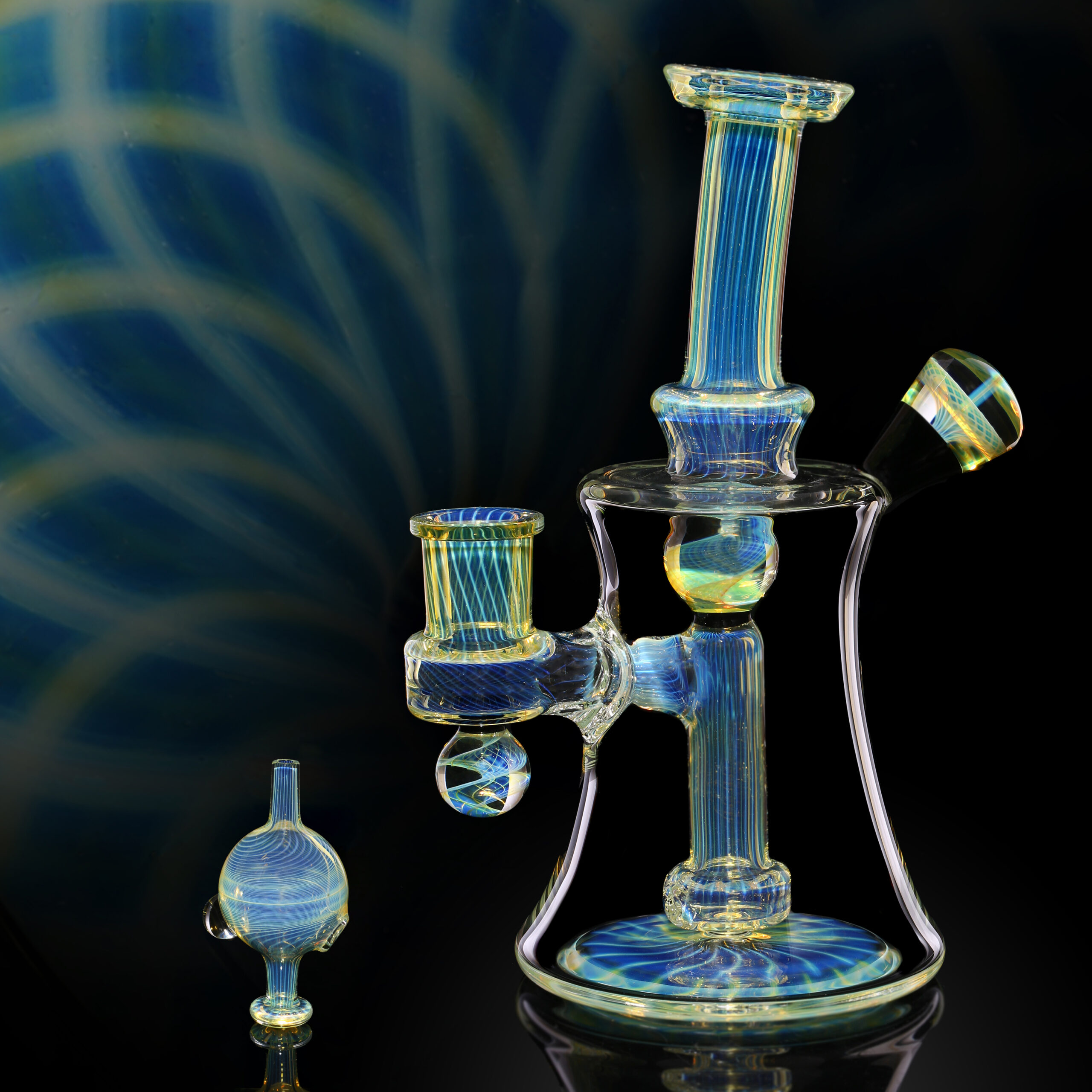The History of Glass Pipes
The art of glassblowing dates back to some of our earliest civilizations. It was not until the Roman empire of 30 B.C. that colored glass rods and blow tubes started to be used to create hollow glass containers for the richest members of society at the time. It took nearly 2000 years for glassblowers to use this skill to make smoking devices, but it was only in the 1960’s glass pipes emerged, and then only for the rich due to their rarity.
The Glassblower Bob Snodgrass is credited with developing the glass-pipe-making techniques used throughout the world today while touring with the Grateful Dead in the 1970s and ’80s. Snodgrass eventually settled down in Eugene, Oregon.
For two and a half decades after the first patent was filed, the glassblower’s enjoyed a golden age with a unique market with a lot of potential, the fast-growing industry of pipe and bong making.
In the USA the government began to take notice of the fast growth of this semi-legal business, and in 2003 they launched a sting called Operation Pipe Dream which targeted head shops, smoke shops, and glass artists in what was an attempt by law enforcement to limit the illegal sale of drug paraphernalia.
A George Bush administration sting targeted businesses across the country, the most notable of which was Tommy Chong. He was convicted of conspiracy to distribute drug paraphernalia and sentenced to nine months in prison. A lot has changed since then.
It may be easy to write off an invention in something as seemingly small as a piece of pipe paraphernalia, but it’s incredibly rare for any artist’s hand to be involved in the creation of something as universal as the modern glass bong. Just like fine textiles, pottery, or furniture, functional glass is made by studio artists executing their skills at an astonishing degree of craftsmanship.
Today’s glass pipes range from super affordable pieces to wholly unique works of art that Picasso himself would be proud of.
Timeline of Glass Pipes
30 B.C. – The glass-blowing technique became popular.
1492 – Christopher Columbus came across Native Americans who were all about smoking tobacco pipes. The pipes were made of wood and other accessible material.
1559 – Jean Nicot, a French diplomat brought a tobacco pipe back to France, and it quickly became a hit within the local culture.
1600 – Clay pipes came about and became widely accepted amongst the English culture.
1800 – The wooden tobacco pipe became popular and widely used for tobacco and hashish.
1960 – Using glass to produce extravagant pieces of art to display and smoke out of, grew extremely popular in society.
1977 – The first glass pipe patented.
2003 – America ran a sting operation on head shops and smoke shops to pull drug paraphernalia from being sold.
2010 – There are a plethora of glass weed pipes available. Glass-blowing techniques are fine-tuned, and production is taking off.
2018 – Glass weed pipes is one of the largest cannabis sectors, with some pieces going for over $100 000.
Types of Glass pipes
Today we have a wide variety of Glass pipes to choose from, Chillums, Bowls, Bubblers, Bongs, Percolator Bongs and of course Dab Rigs like Waughstreet Glass’s Wig-Wag Fumed Mini Rig or the Grav Orbis Lume Bong, both available from thedrugstore.com
When buying a glass pipe or bong, make sure it’s all glass. Cheaper bongs and pipes can be made with rubber or plastic joints. Metal bowls and metal or plastic down stems are also common on cheap bongs. Rubber, plastic, silicone, and metal are difficult to clean and not as safe as glass under high temperatures.
Well-made glass-on-glass joints are important to achieve a perfect seal on the pipe. The type of glass also makes a difference. Borosilicate is much better and can take heating and cooling that is a necessity for glass pipes. Borosilicate must be heated too much higher temperatures to melt, hence its nickname “hard glass.” That means it is better for making tightly sealed and complex joints.
Water pipes, also known as bongs, are very popular and range from tiny bubblers to human-height tubes on the very extreme end. Most bongs fall within the 15 – 45 mm range, though. Flower smokers are looking to diffuse and filter their smoke as much as possible, so glass pieces with one or more percolators and plenty of holes for diffusion are best for a smoother smoke. Concentrate users have almost as many options of different glass styles as flower smokers.
A glass dab rig is the standard for most concentrate users. Almost any medium or large bong can be adapted to work for concentrates too, although you might sacrifice some flavor along the way. To use a flower bong as a dab rig, simply attach a quartz, glass, ceramic, or titanium nail where the bowl would go. While huge bongs can also be adapted into dab rigs, keep in mind that smaller chambers are generally better for dabbing.
For decades glass making has been considered an art, you only need to look at the range of glass pipes to understand just how inventive the process has become.


